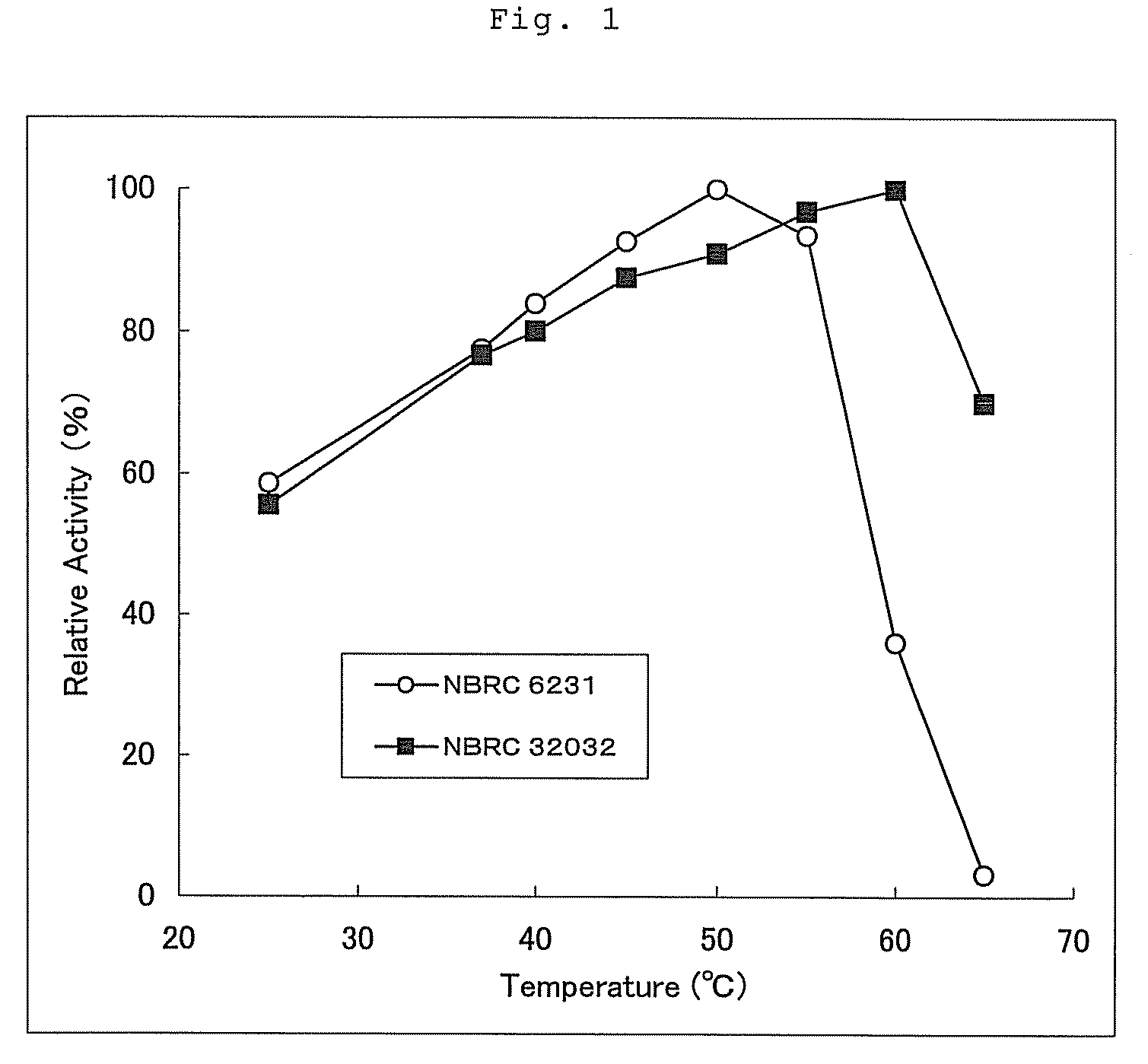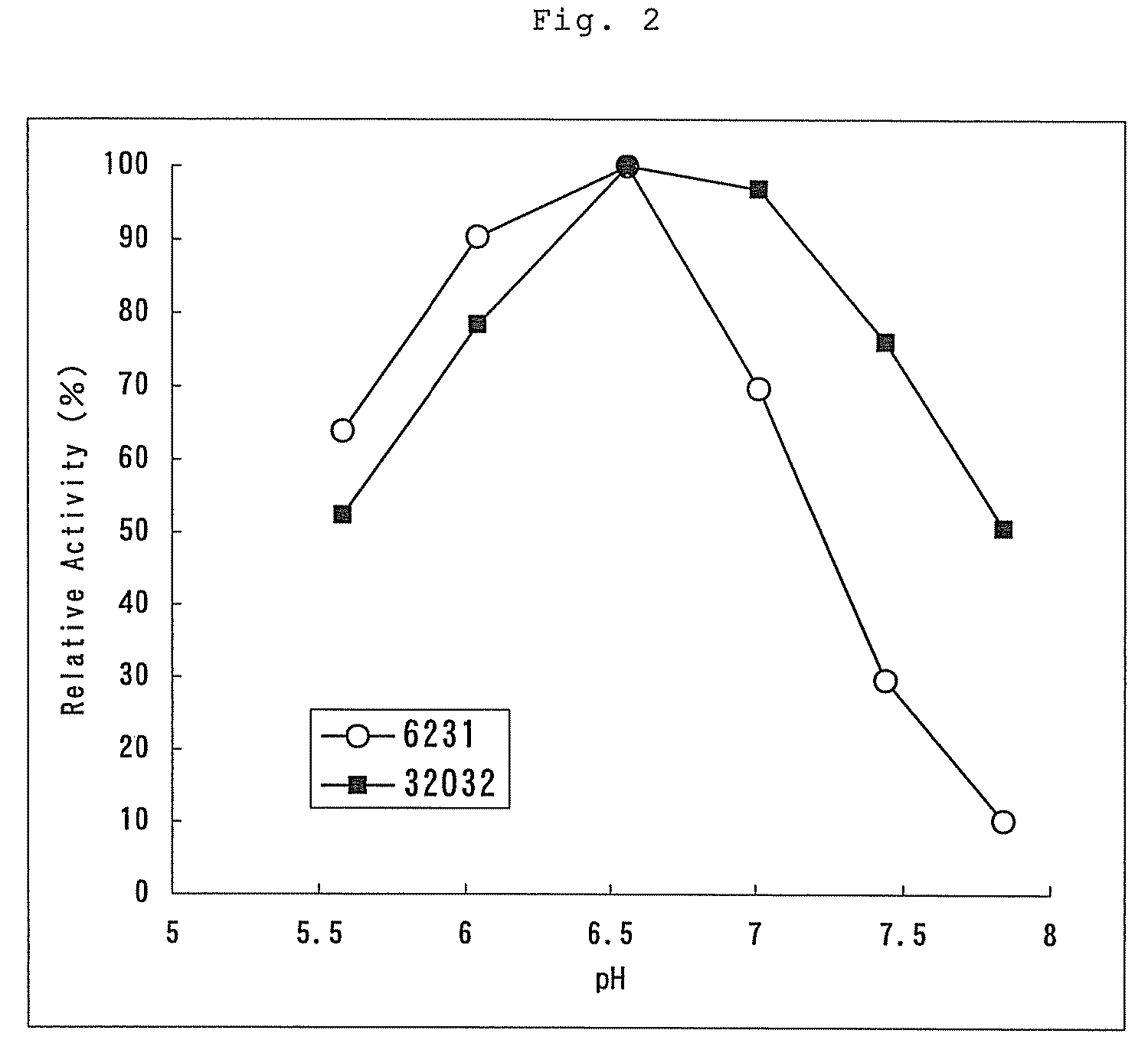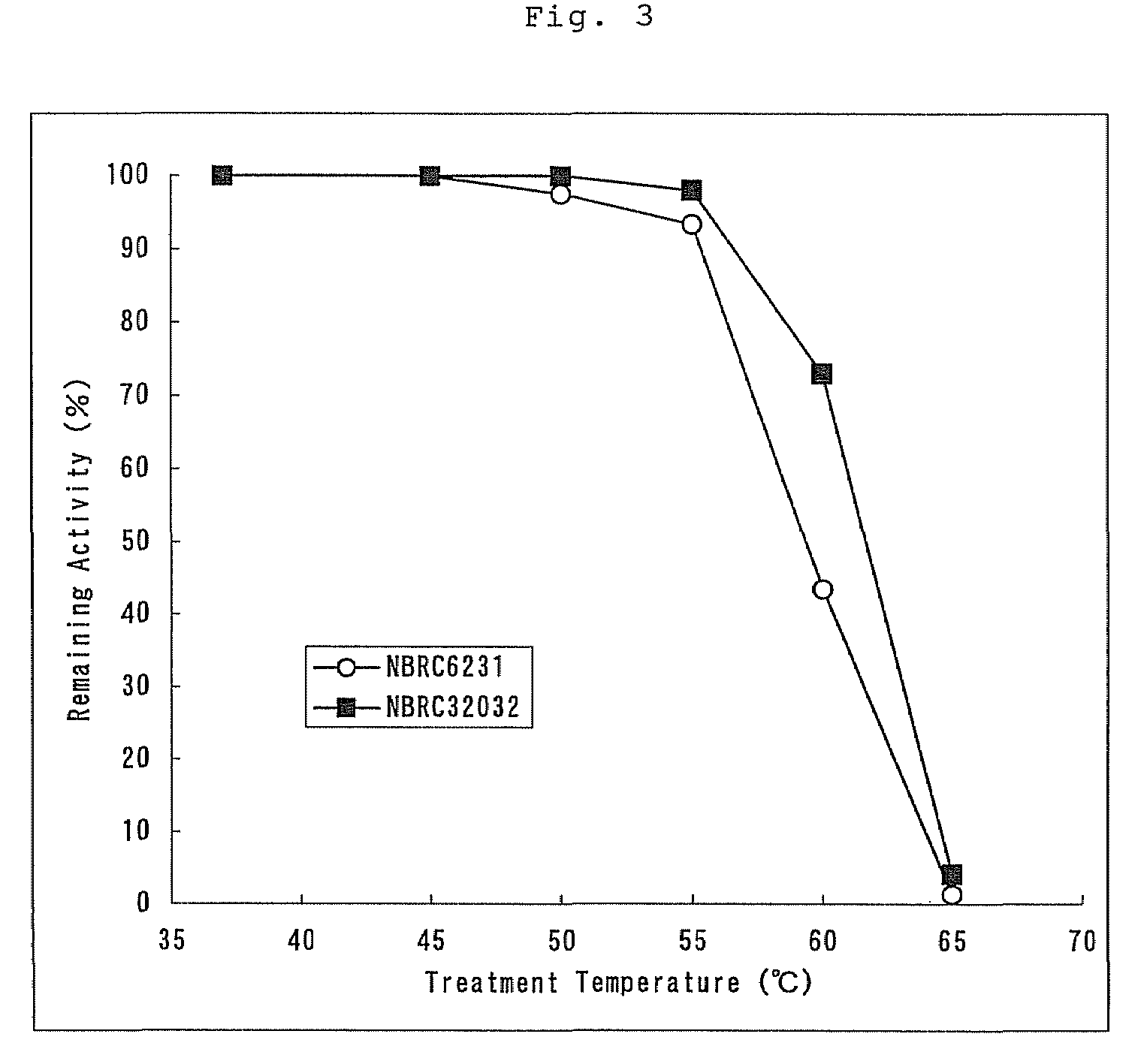Glucose dehydrogenase
a glucose dehydrogenase and glucose technology, applied in the field of glucose dehydrogenase, can solve the problems of impaired measurement accuracy, poor stability of nad(p)-dependent glucose dehydrogenase, and impaired measurement accuracy
- Summary
- Abstract
- Description
- Claims
- Application Information
AI Technical Summary
Benefits of technology
Problems solved by technology
Method used
Image
Examples
example 1
Acquisition of GDH Derived from Filamentous Fungi Belonging to Genus Penicillium
[0129]Using Penicillium lilacinoechinulatum NBRC6231 and Penicillium italicum NBRC32032 (purchased from Independent Administrative Institution, National Institute of Technology and Evaluation) as fungi producing GDH, the respective lyophilized fungi were inoculated on a potato dextrose agar medium (supplied from Difco) and incubated at 25° C. to restore. Fungal threads restored on the plate were collected including the agar, which was then suspended in filtrated sterilized water. A production medium (1% malt extract, 1.5% soy bean peptide, 0.1% MgSO4.7H2O, 2% glucose, pH 6.5) was prepared in two 10 L jar fermenters and sterilized by autoclave at 120° C. for 15 minutes. Then, the above fungal thread suspension was added thereto, and the culture was started. The culture was performed under the condition of a temperature at 30° C., a ventilation amount at 2 L / minute and a stirring frequency at 380 rpm. The...
example 2
Estimation of Molecular Weight
[0130]The GDH solution (25 μL) derived from NBRC6231 or NBRC32032 purified in Example was applied to TSK-GEL G300SW (7.5 mm×300 mm) supplied from Tosoh Corporation, buffered with Tris-HCl (pH 7.5) and was fractionated at a flow rate of 0.5 mL / minute. For the elution of GDH from NBRC6231, an elution time was determined from a peak appearing position by monitoring the absorbance at 280 nm. For the elution of GDH from NBRC32032, the fractions were collected using a fraction collector, the GDH activity in each fraction was measured according to Test Example, the peak fraction was specified and the time required for the elution was calculated from the peak. Based of the elution time, the molecular weight of the GDH protein was calculated from a standard curve previously made using standard protein solutions (MW-Marker [MW 12,400 to 290,000] supplied from Oriental Yeast Co., Ltd.). As a result, it was estimated that GDH derived from NBRC6231 and GDH derived f...
example 3
Optimal Reaction Temperature
[0131]In order to know the optimal reaction temperature of the purified GDH solutions derived from NBRC6231 and NBRC32032 obtained in Example 1, by making a preliminary heating temperature and the temperature of the reaction reagent 25, 37, 40, 45, 50, 55, 60 and 65° C., the activity under each condition was measured. FIG. 1 is a graph showing a relative activity when the maximum activity value was made 100. From the above, it has been found that the optimal reaction temperature of GDH derived from NBRC6231 is in the range higher than 45° C. and lower than 55° C. and is about 50° C. and that the optimal reaction temperature of GDH derived from NBRC32032 is in the range higher than 55° C. and lower than 65° C. and is about 60° C.
PUM
| Property | Measurement | Unit |
|---|---|---|
| heat resistance | aaaaa | aaaaa |
| temperature | aaaaa | aaaaa |
| temperature | aaaaa | aaaaa |
Abstract
Description
Claims
Application Information
 Login to View More
Login to View More - R&D
- Intellectual Property
- Life Sciences
- Materials
- Tech Scout
- Unparalleled Data Quality
- Higher Quality Content
- 60% Fewer Hallucinations
Browse by: Latest US Patents, China's latest patents, Technical Efficacy Thesaurus, Application Domain, Technology Topic, Popular Technical Reports.
© 2025 PatSnap. All rights reserved.Legal|Privacy policy|Modern Slavery Act Transparency Statement|Sitemap|About US| Contact US: help@patsnap.com



